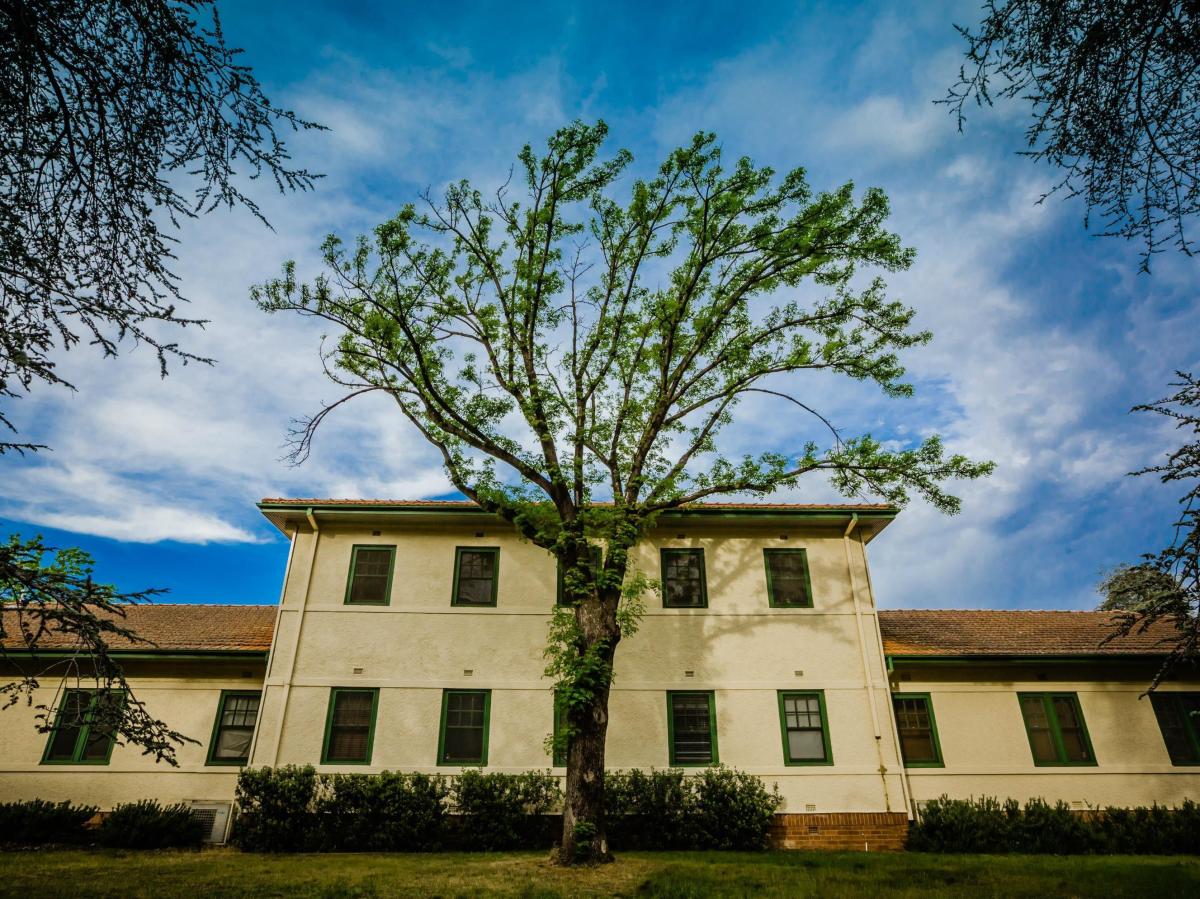Image credit: Andrew Sikorski
Prior to the official relocation of the Australian Parliament to Canberra in 1927, construction work began on housing for the small army of bureaucrats who would accompany the government of the day. One such building was Gorman House in inner city Braddon, designed by the Commonwealth’s Chief Architect, John Smith Murdoch.
Today, the building is known as Gorman Arts Centre, and instead of housing public servants, its residents are a dynamic mix of artists and arts organisations.
‘These buildings were erected in the 1920s … They’re places that are deeply connected to the story of Canberra as a city in its own right, but also as a capital city,’ said Joseph Falsone, Director, Ainslie and Gorman Arts Centres.
‘Gorman Arts Centre, for example, as Gorman House, was a hostel for young, lower-ranking public servants at the time they shifted the workforce from the temporary capital in Melbourne to Canberra. So there’s something about the place that’s embedded in the story of Canberra as a capital city in the first place, but also as a small town that had big ambitions.’
Those ambitions continue today across not one but two arts centres. ‘We took on the management of Ainslie Arts Centre, which is another heritage-listed building a few hundred metres away, and we re-defined the place, if you like.’
At Gorman Arts Centre, the focus in on the development of new work across all art forms, while Ainslie is dedicated to music, with a particular emphasis on youth and community music programs.
‘I think one of the big opportunities here is that we are an organisation that manages facilities, manages tenancies, but we also manage venues – so we do arts programming, promotion and advocacy as well. We’re able to take a holistic approach,’ Falsone said.
‘And what we’ve been doing is developing the place as a hub, saying, ‘How do we work with our audiences, our resident organisations, even with the ACT government, to create something that’s greater than the sum of its parts?”’
Some 40 artists and organisations are resident at the two arts centres, including Canberra Contemporary Arts Space, Nancy Sever Gallery, Canberra International Music Festival, Canberra Youth Theatre, Ausdance ACT and Luminescence Chamber Singers. Coupled with the programming of work from local independent artists, as well as work from outside of Canberra, the result is truly dynamic.
‘We can have as many as 140 separate room bookings in a week, and three or four or five audiences here at the same time seeing different things – that’s how busy it can get. And at Ainslie Arts Centre there’s about 8,000 to 10,000 people coming through the doors a month. That’s a mix of resident activity, venue hire and programming that the centre initiates, and we see that diversity as a strength,’ said Falsone.
Learn more about Ainslie and Gorman Arts Centres
In 2025, Gorman Arts House will celebrate its centenary, and while the first stage of a masterplan has been completed – including capital works to open up more spaces for performance and presentation – there’s more work yet to be done.
‘We don’t have the resources to be a producing and presenting organisation predominantly, and so all of the approach to programming comes from having a vision for wanting to encourage cross-disciplinary work, and to encourage more dialogue about work.
‘We’re also looking to put more structure and resourcing around the development work that we’re doing with artists, with projects, and with emerging organisations … including looking at some models for a studio artists’ development program.’
Part of planning for the future of Ainslie and Gorman Arts Centres means responding to the changing nature of Canberra itself.
‘Something that has changed radically in the last decade is that there are many more examples now of emerging artists who are looking to develop projects in collaboration with others, and also they stay in Canberra … They come to us with an idea and stay in Canberra to make it happen.’
The Centres assist such groups by providing access to co-working spaces, one at each venue, as well as grant auspicing and opportunities to meet with their creative producers.
‘We’re looking at how we develop pathways for those emerging organisations. I think that’s the next step for Canberra, to move beyond the city – where we’ve had a range of arts organisations that are reasonably well funded over a couple of decades – and create space for the emerging projects and groups to actually become more sustainable.
‘And then there’s the development of new work, and that’s where our Ralph Indie Program has been an interesting experiment. We’ve also been providing what we call “Flash Residencies” where we provide in-kind support to access space if you have an unfunded project.
‘It’s an exciting future,’ Falsone said.
Learn more about Ainslie and Gorman Arts Centres at www.agac.com.au.





